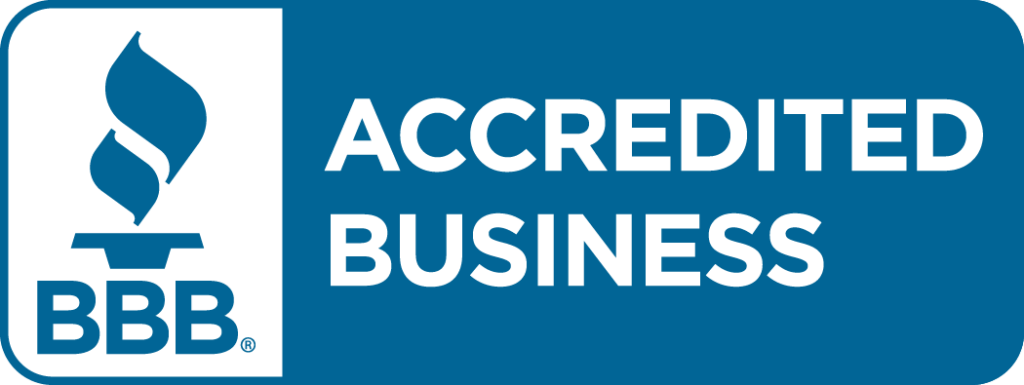There are many variables to truck driver recruiting, but one of the most crucial ones is also one that often gets overlooked. Trucking is a massive industry and is made up of a diverse group of people with varying skill sets and experiences.
This is exactly why one of the most important things to remember with recruiting is never lose sight of exactly what kind of drivers you need. With so many unique drivers and skill sets, AND so much competition from other fleets, one of the best ways to be successful in recruiting is to be focused on exactly who you need to target.
We’ve talked about trying to recruit younger prospects and focusing more on women drivers in the past, but today I’d like to look at a handful of driver types out there and what makes each unique. In addition, with information available through RigDig BI and the use of a heat map we can take a look at see where active drivers of that type are located.
[hr style=”3″ margin=”40px 0px 40px 0px”]
Company Drivers and Owner-Operator Drivers
The biggest of the driver “subsets” is what most people think of when talking about different driver types: company drivers and owner-operator drivers.
[box]
Company Driver:
Driver that works for a company or fleet, and drives whatever vehicle or equipment provided to them by that fleet.
Owner-Operator Driver:
Driver who owns their truck. Employing fleets pay the owner-operator for both their services as a driver and for the use of the truck.
[/box]
We’ve covered the pros and cons of these two driver types before and touched on various differences that exist when trying to recruit company drivers and owner-operators.
Though it is something we’ve covered before, it is still important to know that these two major driver types are inherently different. This is why company drivers and owner-operators should be approached differently by fleets and their recruiters.
For some helpful information on driver demographics and tendencies references our connectivity studies.
[box]
[one_half] [/one_half][one_half_last]
[/one_half][one_half_last] [/one_half_last]
[/one_half_last]
[/box]
[box]
[one_half]
Where Are the Company Drivers?
88% of Drivers Found With RigDig BI Identify as a Company Driver

[/one_half]
[one_half_last]Company Driver Pros:
- Fleet owns equipment, meaning if a driver leaves only a replacement driver is needed – not a new driver AND truck
- Most common driver type
Company Driver Cons:
- Fleets are responsible for all fuel and maintenance costs
[/one_half_last]
[/box]
[box]
[one_half]
Where Are the Owner-Operator Drivers?
9% of Drivers Found With RigDig BI Identify as a Owner-Operator Driver

[/one_half]
[one_half_last]
Owner-Operator Pros:
- Typically more experienced
- Fleets’ truck costs are minimal
Owner-Operator Cons:
- Not dependant on fleets for equipment, making it easier for these drivers to seek work from a competing fleet
- When an owner-operator leaves a fleet, the carrier not only loses a qualified driver, but a truck as well
[/one_half_last]
[/box]
Moving beyond company and owner-operator drivers, there are several other key ways drivers can be defined and segmented.
[hr style=”3″ margin=”40px 0px 40px 0px”]
Team Drivers
[box]
Team Drivers:
Two drivers that operate the same truck, and split the driving time during a haul.
[/box]
Team drivers are often an attractive option for fleets. Fleets may choose to target team drivers for longer hauls, because with two drivers, teams can usually get the job done faster and more efficiently than solo drivers.
Team driver are frequently composed of spouses (though not always). With two drivers, any equipment costs can be split between them and not be the sole responsibility of one driver alone.
[box]
[one_half]
Where Are the Team Drivers?
17.5% of Drivers Found With RigDig BI Identify as a Team Driver

[/one_half]
[one_half_last]
Team Driver Pros:
- Able to complete long hauls faster and more efficiently
Team Driver Cons:
- Two drivers to pay and keep happy
- Fewer team drivers are available compared to solo drivers
[/one_half_last]
[/box]
[hr style=”3″ margin=”40px 0px 40px 0px”]
Lease to Purchase Drivers
For some professional truck drivers, the possibility of owning their own truck and becoming an owner-operator is an attractive possibility.
[box]
Lease to Purchase Drivers:
Drivers that reach an agreement with their fleet to lease the truck they are driving (usually at a much lower rate than purchasing from a dealer).
[/box]
Depending on the fleet, lease to purchase drivers may be considered owner-operators as soon as they enter into a leasing agreement with the carrier. This type of arrangement between the fleet and driver can be beneficial to both parties.
Lease to purchase arrangements allow the fleet to keep a qualified driver while deferring some of the inherent costs of owning a truck, and at the same time permits an aspiring driver to take the steps necessary to owning their own rig.
[box]
[one_half]
Where Are the Lease to Purchase Drivers?
20% of Drivers Found With RigDig BI Identify as a Lease to Purchase Driver

[/one_half]
[one_half_last]
Lease to Purchase Driver Pros:
- Payments made by drivers can help defer equipment costs
Lease to Purchase Driver Cons:
- Unless otherwise agreed to, when the truck is fully paid off, the driver could leave the fleet
- Fewer number of drivers interested in this arrangement
[/one_half_last]
[/box]
[hr style=”3″ margin=”40px 0px 40px 0px”]
Dedicated Route Drivers
Dedicated routes are coveted among truckers and are usually only assigned to trusted or long tenured drivers within a company.
[box]
Dedicated Route Drivers:
A driver that runs the same route or routes, making deliveries and/or pickups at normal intervals. Running a dedicated route allows the driver to have a much more normal routine and usually results in them being able to spend much more time at home.
[/box]
Delivering the same type of haul to and from regular locations may be monotonous to some, but many drivers entered the industry longing for a sense of freedom and flexibility; this unique arrangement offers the “freedom of the road”, but also provides a far more normal home life.
[hr style=”3″ margin=”40px 0px 40px 0px”]
Student Drivers
One way fleets have tried to get ahead of the competition is by instituting student driver programs.
[box]
Student Drivers:
These drivers agree to drive for a fleet for an agreed upon amount of time as repayment to the carrier for funding the driver’s training and schooling for a CDL.
[/box]
Operating a student driver program is a great way to ensure a steady flow of drivers to a fleet. The downside, of course, is the inherent inexperience of these new drivers just entering the industry.
However, recruiting younger drivers is a need that many fleets have continued to struggle with for some time now. It is more important than ever for the trucking industry to attempt to lure young blood to the business (much of the current driver pool skews older in age and many of the most experienced drivers have begun to hit retirement age).
Aside from the various driver types there is also the possibility of targeting drivers based on their haul experience.
[box]
[one_half]
Where Are the Student Drivers?
1/2% of Drivers Found With RigDig BI Identify as a Student Driver

[/one_half]
[one_half_last]
Student Driver Pros:
- Can provide a steady flow of new drivers for fleets
- Drivers must stay with fleets for a predetermined amount of time
Student Driver Cons:
- Drivers have very little experience
- If the driver is not happy with the fleet, they have to the ability to leave as soon as the agreed upon time has lapsed
[/one_half_last]
[/box]
[hr style=”3″ margin=”40px 0px 40px 0px”]
Drivers by Type of Haul
The many types of hauls require different skills of drivers. Targeting these niche’ driver skills can help you more effectively meet your recruiting goals.
[box]
[one_half]
Where Are the Flatbed Drivers?
33% of Drivers Found With RigDig BI Have Flatbed Haul Experience
Flatbed:
Flatbed trucking presents several unique obstacles that are not present in other areas of the industry. We’ve previously addressed how to approach some of the negative perceptions associated with flatbed trucking in the article, How to Counter 4 Myths About Flatbed Truck Driving.
[/one_half_last]
[/box]
[box]
[one_half]
Where Are the Tanker Drivers?
20% of Drivers Found With RigDig BI Have Tanker Haul Experience
Tanker:
Tankers specialize in hauling liquid freight such as oil or fuel. Tanker trucks can be much more dangerous if involved in an accident due to the volatility of their usual cargo. Because of this increased dangers, drivers of tanker trucks require a certification to transport hazardous material.
[/one_half_last]
[/box]
[box]
[one_half]
Where Are the Dry Van Drivers?
58% of Drivers Found With RigDig BI Have Dry Van Haul Experience
Dry Van:
The typical 18 wheeler as thought of by the public. This type of enclosed trailer pulled behind the truck is the most common form of large truck on today’s roads.
[/one_half_last]
[/box]
[hr style=”3″ margin=”40px 0px 40px 0px”]
Which Drivers Are Right for You?
Every fleet has different needs. The key to successful recruiting is defining your needs and targeting the right drivers to fill those needs. Through the information available with RigDig BI you can actively seek out precise driver segments and see where they are located in addition to other search criteria such as license class, endorsements, or years of experience.
Whether you choose to search for drivers based on driver type, haul experience, or any other variable that is important to you, the key is narrow down the field and actively pursue those prospective drivers who are most valuable to you.
[acf field=”cta_9″ post_id=”option”]












